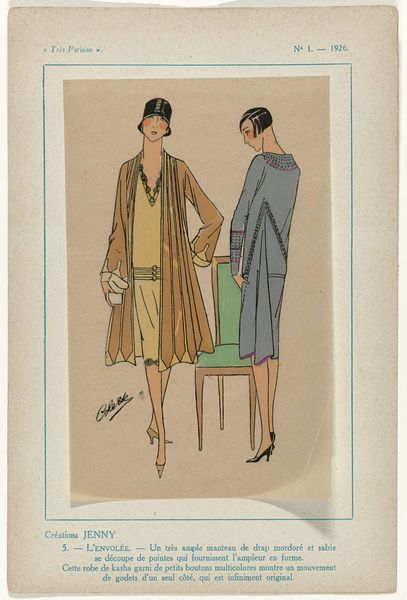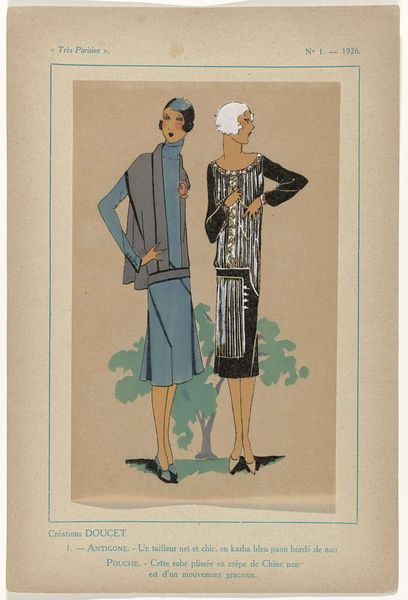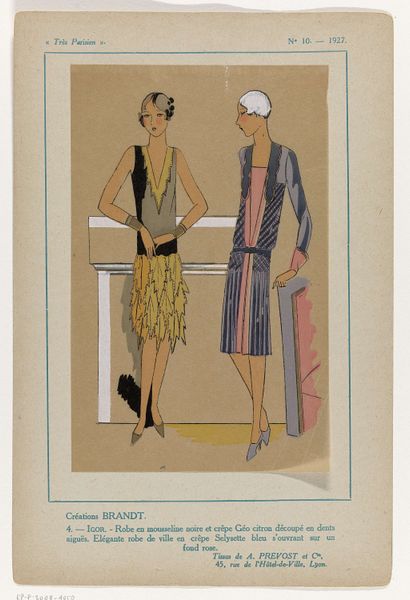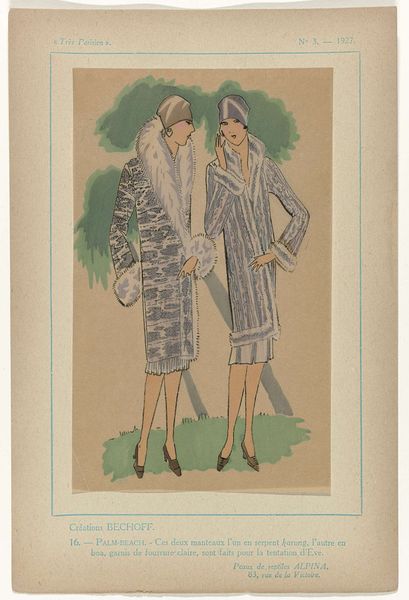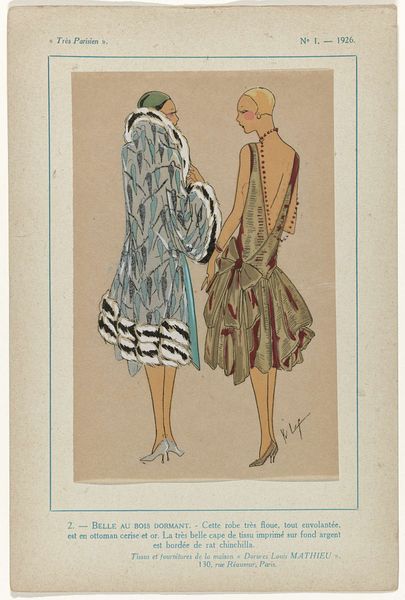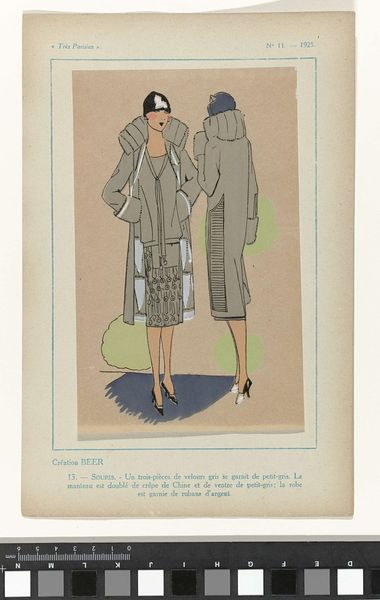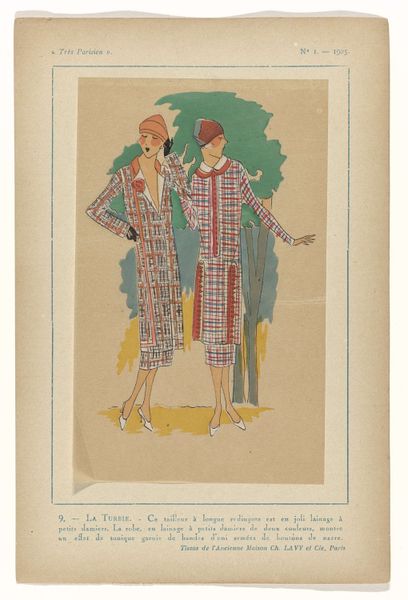
Très Parisien, 1927, No. 8 : -18.- RISQUE TOUT.-Tailleur de velours (...) 1927
0:00
0:00
anonymous
Rijksmuseum
drawing, painting, print, watercolor
#
portrait
#
art-deco
#
drawing
#
water colours
#
painting
# print
#
watercolor
#
watercolour illustration
#
genre-painting
#
watercolor
Dimensions: height 268 mm, width 177 mm
Copyright: Rijks Museum: Open Domain
Curator: This watercolour illustration, titled "Très Parisien, 1927, No. 8: -18.- RISQUE TOUT.-Tailleur de velours (...)" captures a moment of early 20th-century Parisian fashion. Editor: It has this wonderfully understated opulence, doesn’t it? The muted tones and almost sketch-like quality give it a casual feel, even with the luxurious furs. It feels effortlessly chic. Curator: Indeed. The print really speaks to the burgeoning ready-to-wear culture, portraying class, gender and modern femininity through its meticulous focus on textiles. Consider the stated "violet velvet suit trimmed with degraded astrakhan" and the "raspberry kashadou coat trimmed with gray fox". Editor: The use of kashadou and fox trim immediately suggests a very particular socioeconomic position and engages questions of labor – from fur trappers to textile workers, their unseen hands constructed the images. This wasn't simply fashion; this was an industry that created and upheld a whole chain of exploitative relationships. Curator: Absolutely. We can even situate these pieces within discussions around consumerism, mass media and celebrity culture as arbiters of social expectation and influence. Also, how does this image define beauty through specific visual rhetoric of slender body ideals? Editor: And what about the medium of watercolour itself? It's interesting how the perceived 'delicacy' of the medium contrasts with the potential violence inherent in fur production, it's a soft sell of some hard labour Curator: Precisely. Furthermore, there's a narrative implicit here. It beckons the viewer to enter into this visual narrative through the dress, while it also underscores the artificiality inherent in representations of Parisian modernity at this time. Editor: Seeing it like this allows the artwork to have new discussions around consumption. In fact, in this context, what can be said of the accessibility and cost of such garment and materials at this moment? How do the materiality of the garments worn by the women play into their image in society? Curator: The illustration can be thought of as more than an interesting historical record; rather, it’s an artefact pregnant with socio-economic implications which deserve investigation and challenge dominant historical frameworks that center only on an aesthetic or formal discussion about an object, disregarding the context it holds and implies. Editor: I am left wanting to uncover hidden histories—who made the clothes, under what conditions were they created? That fashion is a global network that must take accountability for a violent past is also what remains after looking at this print.
Comments
No comments
Be the first to comment and join the conversation on the ultimate creative platform.



